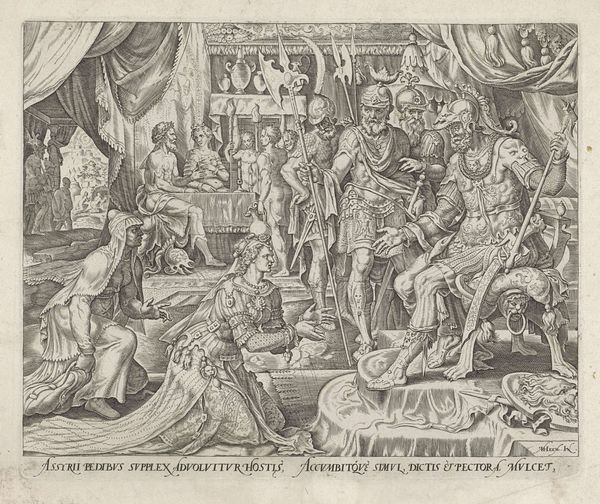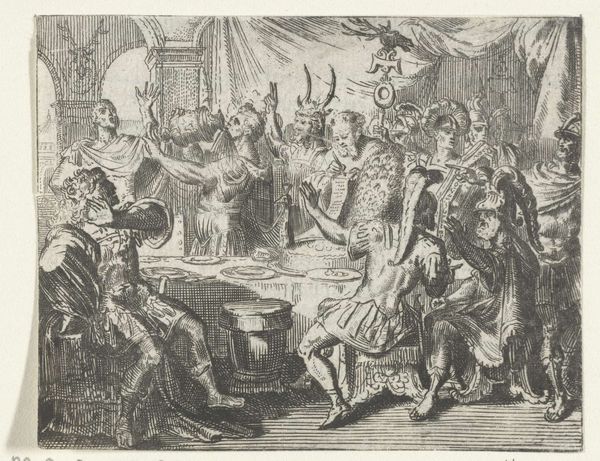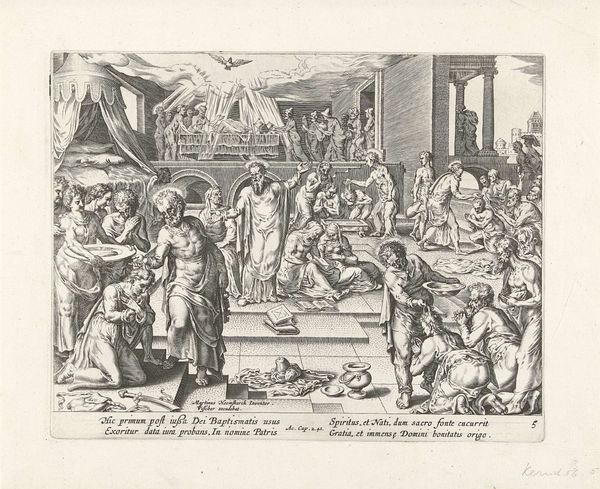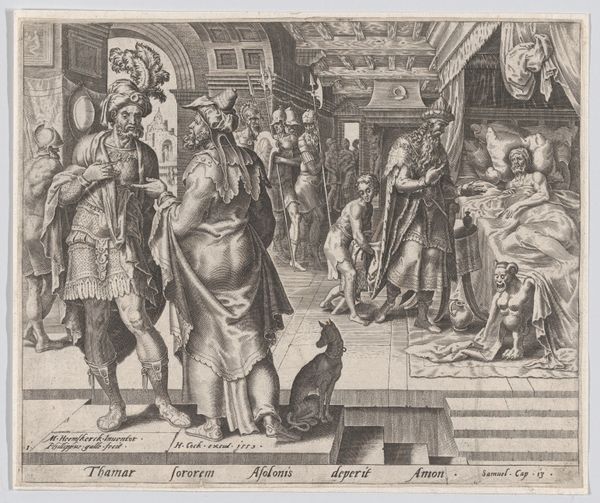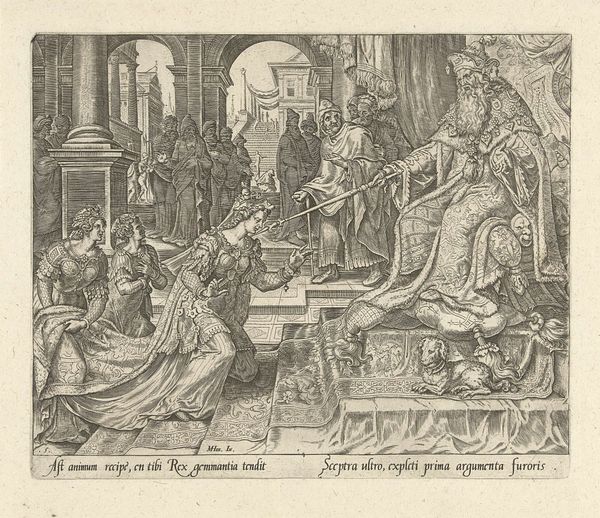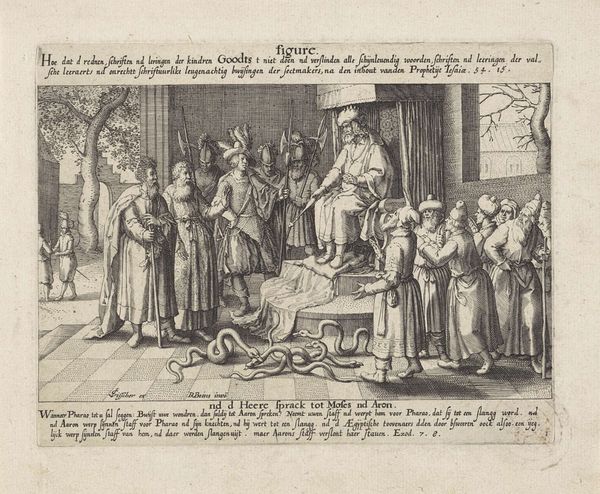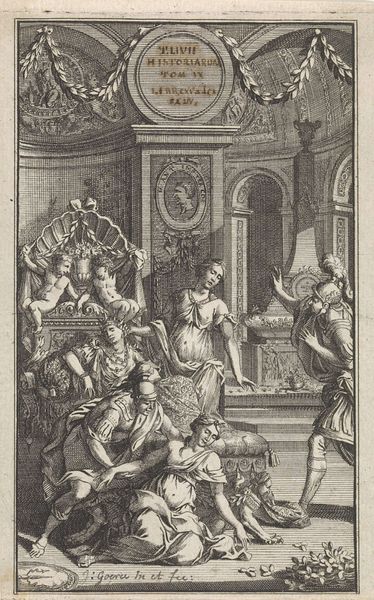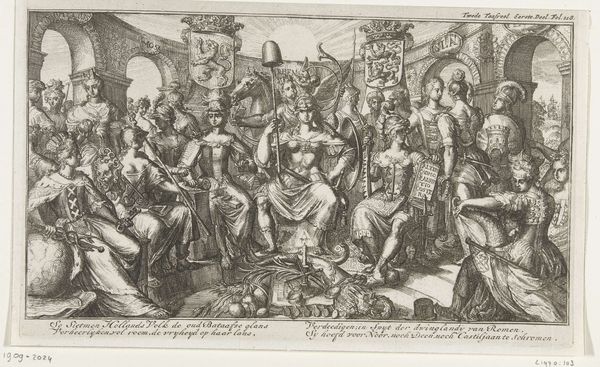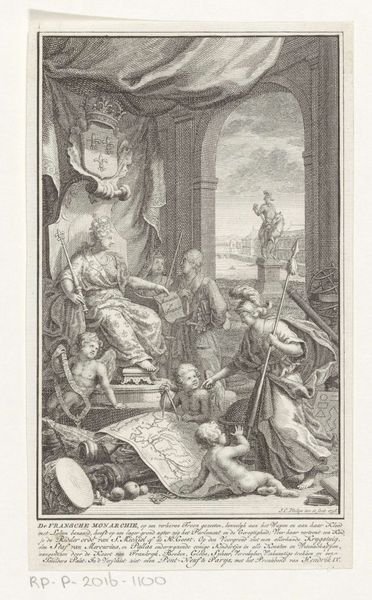
print, engraving
#
narrative-art
#
baroque
#
pen drawing
# print
#
figuration
#
form
#
line
#
history-painting
#
engraving
Dimensions: height 143 mm, width 180 mm
Copyright: Rijks Museum: Open Domain
This print, by Romeyn de Hooghe, captures the scene of preparing to consult the Oracle of Delphi. It was made using the technique of etching, a printmaking process reliant on the controlled corrosion of metal. De Hooghe would have coated a copper plate with wax, then used a sharp needle to scratch away lines of the composition, exposing the metal underneath. When the plate was submerged in acid, the drawn lines would be bitten into the surface. The longer the plate remained in the acid, the deeper the lines. This painstaking method allowed for the creation of intricate, detailed images, though demanding precision and skill. The resulting print has a distinctive texture, a product of the etched lines, which create depth, shadow, and a remarkable fineness of detail. Consider the labor involved, not just in the original concept, but the sheer manual work of incising the image, and the chemical knowledge required to achieve a perfect, even bite. The finished print, sold and collected, is an example of how craft, labor, and knowledge intersect in the world of art.
Comments
No comments
Be the first to comment and join the conversation on the ultimate creative platform.



